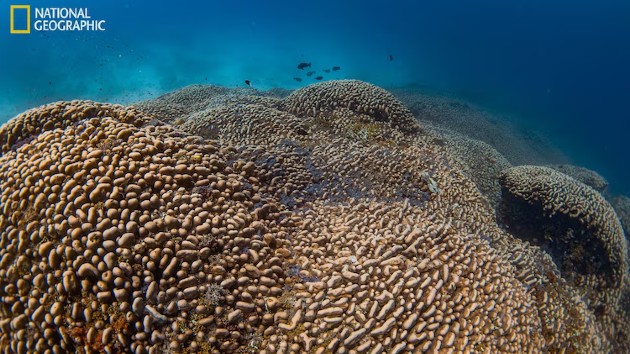South Korea exporting arms to Poland amid controversy over lethal aid to Ukraine
Written by ABC Audio ALL RIGHTS RESERVED on April 20, 2023
(SEOUL, South Korea) — South Korea’s presidential office confirmed that the ongoing machine gun bullets, battle tank shell, and reactive armor exports deal to Poland will continue as planned amid controversy after President Yoon Suk Yeol signaled his intentions to send weapons directly to Ukraine if a large-scale attack on civilians is carried out by Russia.
President Yoon’s comments were strongly criticized by Russian officials saying “such actions would definitely ruin Russian-Korean relations.”
In Yoon’s interview with Reuters, he said that if there were to be a large-scale attack on Ukrainian civilians, a massacre or a serious violation of the laws of war by Russia, that it might be difficult for South Korea to insist only on humanitarian or financial support.
The presidential office immediately clarified that President Yoon was merely referring to a “hypothetical situation” and explained to reporters “what South Korea does in the future will depend on Russia’s action.”
President Yoon is expected to meet President Joe Biden at the White House for his second bilateral summit next week and the two leaders are expected to “discuss a shared vision of a strong and deeply integrated U.S.-ROK Alliance that maintains peace, stability, and prosperity in the Indo-Pacific and beyond,” the White House announced on Wednesday.
South Korean companies have begun to wade into the global arms market to fill the gap in the international arms shortage. Last year, South Korea’s arms exports rose to a record $17.3 billion and Hanwha Aerospace, the largest defense company in South Korea, accounts for more than half of overseas arms exports in the country, according to South Korea’s Defense Ministry.
In the case of Poland, South Korea currently exports tanks, fighter jets, howitzers and multiple rocket launchers as Poland has been sending its conventional weapons to Ukraine.
The arms exported to Poland include 180 K2 main battle tanks by Hyundai Rotem and Hanwha Aerospace’s 672 K9 A1 self-propelled howitzers. The first 24 of Hanwha’s howitzers were delivered to Poland’s soil last December while the company looks for ways to manufacture a portion of their product in Poland as well.
“We have 10 K2 tanks and 24 K9 howitzers on Polish soil. I emphasize that this is only the first batch of equipment that is to be delivered to Poland. There will be more deliveries next year,” Mariusz Błaszczak, Deputy Prime Minister and Minister of National Defense said during the collection of equipment from South Korea last December.
It took less than half a year for Hanwha Aerospace to land an export deal and deliver the product to Poland — an unprecedented speed in signing and executing an arms contract since it is a process that normally takes four to five years. For Hanwha, it was the largest order from overseas.
“The Ukrainian war is draining inventory of conventional weapons, such as self-propelled guns, missiles, and shells, which are most commonly used in actual war. Since major weapons-producing countries like the U.S. and Germany have reduced production lines for conventional weapons, it will take years to meet the demand, but South Korea was ready,” Chae Woo-suk, the president of the Korea Defense Industry Association, told ABC News. “Poland imported new weapons to defend themselves from South Korea to cover the short supply after they have exhausted a lot of old existing weapons supporting the Ukrainian war.”
A subsidiary of South Korean conglomerate Hanwha Group, Hanwha Aerospace provides most howitzers and fighting vehicles for the country’s military. As one of the few countries in the world that is technically still at war, South Korea’s arsenal companies have been maintaining and upgrading the conventional weapons production to equip the more than 3.6 million army personnel.
Despite playing second fiddle in the arsenal industry to companies in the West, South Korean companies like Hanwha have a comparative advantage in their production capabilities. Hanwha explained their biggest advantage is that they can meet the demands in a shorter period of time because they are relatively free from the global logistics disturbance when assembling their howitzers and war vehicles. For instance, 92% of Hanwha’s K9 howitzer parts are manufactured within South Korea.
“Our strong local manufacturing ecosystem has enabled us to be a key player providing high-quality weapon systems like our artillery and armored vehicles. And localization rate reaches over 80%,” Dae-young Kim, Executive Vice President of Hanwha Aerospace told ABC News. “Many thought that conventional weapons like battle tanks and artillery systems do not necessarily belong to the battle environment in the 21st century. But as seen in the Ukraine war, the artillery capabilities still play an essential role, and Hanwha Aerospace has strength in providing them.”
Hanwha’s export deal with Poland has expanded its production line in Changwon and around 50 more workers were committed to the K9 Howitzer production in March to increase production capacity to meet export demand.
“It takes approximately 100 days to complete one K9 howitzer-starting from laying the foundation plate and running a road test,” production manager Cha Yong-su at Hanwha Aerospace Changwon manufacturing plant, told ABC News. “Skilled workers as well as the automated robots who enable the hectic schedule.”
The South Korean government has reiterated its official position that they will not send Ukraine any direct lethal aid in the midst of the current controversy.
Copyright © 2023, ABC Audio. All rights reserved.







